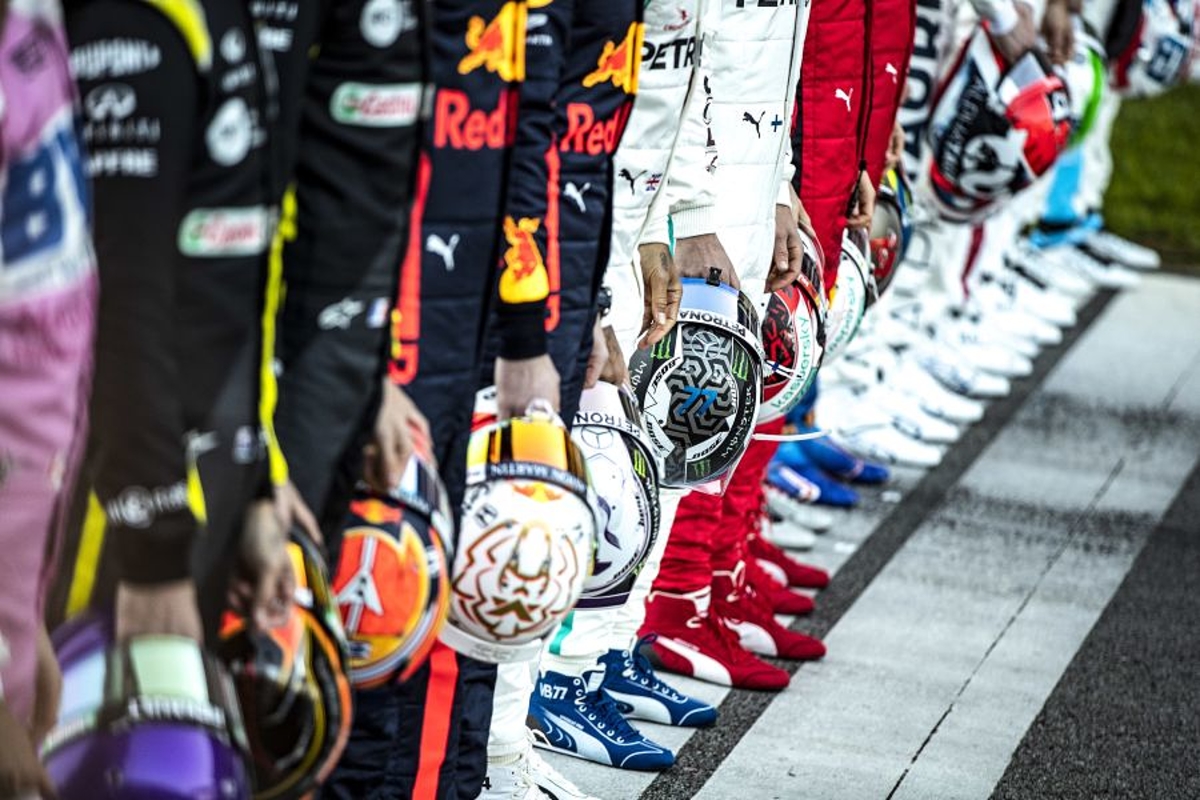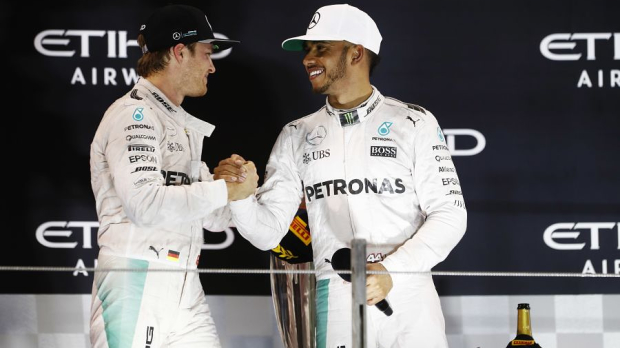
Former F1 world champion reveals what he SACRIFICED for victory
Former F1 world champion reveals what he SACRIFICED for victory

Nico Rosberg's path to securing the 2016 Formula 1 championship wasn't just about speed on track; It entailed a calculated strategy, fine-tuning even the smallest elements to enhance performance and a deep understanding of his teammate Lewis Hamilton.
In this high-stakes showdown, it was crystal clear that one of them would emerge as the victor of the coveted world championship, and Rosberg was determined to be the one. To gain a competitive advantage, the German athlete even abandoned cycling.
Growing up racing karts with Hamilton, Rosberg gained an intimate understanding of his rival's driving style and tendencies. This insight into his rival's inner workings proved pivotal as they both battled for dominance in the fastest car on the grid.
In the latest episode of Beyond All Limits, F1 journalist Tom Clarkson dissected Rosberg's championship pursuit, shedding light on how he gained a competitive edge.
In a bid to optimise his performance, he made a significant sacrifice: he bid adieu to cycling. By shedding a kilogram of muscle mass from his legs, he unlocked a marginal gain of about three hundredths of a second per lap on a track like Suzuka.
Clarkson pointed out a direct link to Rosberg's pole position lap in Japan that season.
“Coincidentally," he said, "he took pole by about three hundredths of a second at Suzuka, that laid the foundation for him winning the championship that year.”

Another instance of Rosberg's meticulous approach in 2016 is reflected in his choice of racing gloves.
“Have a look at his race gloves from that season," Clarkson said. "There were no seams, he wanted to have a better feel for the paddle shift and the steering wheel and the buttons and he thought the best way to do that was to get rid of the seams on his gloves.
“That's the level of detail that he was thinking he needed to get into if he was to beat Hamilton,” noted the journalist. Rosberg's belief wasn't unfounded, as he ultimately clinched the world championship that very season.
READ MORE: Current F1 driver REVEALS struggle with eating disorder
Unpacking Marginal Gains in F1
In the pursuit of victory during the 2016 season, Nico Rosberg's focus was squarely on what many refer to as 'marginal gains', but what exactly are marginal gains?
"Marginal gains is the theory that even small insignificant improvements can actually lead to massive improvements further down the line if they can be sustained,” explained Jess McFadyen, an F1 senior producer and journalist.
It extends beyond just enhancing the car's performance through updates to different components of the car. Teams explore a multitude of avenues, including refining team personnel and aiding drivers in performing at their peak.
Carlos Sainz's performance coach, Rupert Manwaring, confirmed that a driver's mental state is a key marginal gain, “The more I worked in the sport, the more I realised just how much the mental side of things can change their performance.”
READ MORE: Former F1 world champion announces racing RETURN
Related
Change your timezone:
Latest News

F1 News Today: ‘Absolute b******s’ Newey claims slammed as Norris INJURED while partying
- 1 hour ago

Hamilton hit with SURPRISE Ferrari claim as new Cullen relationship blossoms - GPFans F1 Recap
- Yesterday 23:57

Current F1 star qualifies for world championship race on two wheels
- Yesterday 22:57

Ricciardo given HUGE boost after upgrade claim
- Yesterday 21:57

‘Absolute b******s’ - Newey’s wife SLAMS Red Bull F1 claims
- Yesterday 20:57

Norris INJURED at party with legendary DJ
- Yesterday 19:57
Related news

F1 legend reveals 'best' era for major F1 format

F1 world champion's private collection to be auctioned off in HUGE sale

Brundle blasts F1's 'biggest mistake EVER' in passionate speech

Schumacher admits not remembering F1 achievements
F1 Standings

Drivers
- Oliver Bearman
- Charles Leclerc
- Carlos Sainz
- Lando Norris
- Oscar Piastri
- Pierre Gasly
- Esteban Ocon
- Sergio Pérez
- Max Verstappen
- Alexander Albon
- Logan Sargeant
- Lewis Hamilton
- George Russell
- Nico Hülkenberg
- Kevin Magnussen
- Fernando Alonso
- Lance Stroll
- Valtteri Bottas
- Zhou Guanyu
- Daniel Ricciardo
- Yuki Tsunoda
Races
-
 Gulf Air Grand Prix of Bahrain 2024
Gulf Air Grand Prix of Bahrain 2024
-
 Saudi Arabian Grand Prix 2024
Saudi Arabian Grand Prix 2024
-
 Grand Prix of Australia 2024
Grand Prix of Australia 2024
-
 MSC Cruises Grand Prix of Japan 2024
MSC Cruises Grand Prix of Japan 2024
-
 Grand Prix of China 2024
Grand Prix of China 2024
-
 Miami Grand Prix 2024
Miami Grand Prix 2024
-
 Gran Premio dell'Emilia Romagna 2024
Gran Premio dell'Emilia Romagna 2024
-
 Grand Prix of Monaco 2024
Grand Prix of Monaco 2024
-
 Grand Prix du Canada 2024
Grand Prix du Canada 2024
-
 Gran Premio de España 2024
Gran Premio de España 2024
-
 Grand Prix of Austria 2024
Grand Prix of Austria 2024
-
 Grand Prix of Great Britain 2024
Grand Prix of Great Britain 2024
-
 Grand Prix of Hungary 2024
Grand Prix of Hungary 2024
-
 Grand Prix of Belgium 2024
Grand Prix of Belgium 2024
-
 Heineken Dutch Grand Prix 2024
Heineken Dutch Grand Prix 2024
-
 Grand Prix of Italy 2024
Grand Prix of Italy 2024
-
 Grand Prix of Azerbaijan 2024
Grand Prix of Azerbaijan 2024
-
 Grand Prix of Singapore 2024
Grand Prix of Singapore 2024
-
 Grand Prix of the United States 2024
Grand Prix of the United States 2024
-
 Gran Premio de la Ciudad de Mexico 2024
Gran Premio de la Ciudad de Mexico 2024
-
 Grande Prêmio de São Paulo 2024
Grande Prêmio de São Paulo 2024
-
 Heineken Silver Las Vegas Grand Prix 2024
Heineken Silver Las Vegas Grand Prix 2024
-
 Qatar Grand Prix 2024
Qatar Grand Prix 2024
-
 Grand Prix of Abu Dhabi 2024
Grand Prix of Abu Dhabi 2024
About GPFans
GPFans is a multi-platform, multi-language brand dedicated to Formula One coverage. We bring you all the ins and outs of the sport, 24/7, everything from up-to-the-minute news and features to the latest viral stories and clips.We believe that a new generation of exciting, outspoken drivers will make F1 more popular than ever before, and we want to give our users access to as much of their heroes as possible, on and off the track. From Lewis Hamilton to Max Verstappen, Daniel Ricciardo to Sebastian Vettel, we provide in-depth analysis of every every Grand Prix in the season, from Australia to Abu Dhabi.
With Formula One under the new ownership of Liberty Media, how the sport is being covered is evolving, and GPFans will look to be at the heart of this progression into new media, as one of the fastest-growing sites covering the king of motorsports.
Follow us on your favorite social media channel
Corporate & Media
 Innovatieweg 20C
Innovatieweg 20C7007 CD, Doetinchem, Netherlands
+31645516860



















 Gulf Air Grand Prix of Bahrain 2024
Gulf Air Grand Prix of Bahrain 2024  Saudi Arabian Grand Prix 2024
Saudi Arabian Grand Prix 2024  Grand Prix of Australia 2024
Grand Prix of Australia 2024  MSC Cruises Grand Prix of Japan 2024
MSC Cruises Grand Prix of Japan 2024  Grand Prix of China 2024
Grand Prix of China 2024  Gran Premio dell'Emilia Romagna 2024
Gran Premio dell'Emilia Romagna 2024  Grand Prix of Monaco 2024
Grand Prix of Monaco 2024  Grand Prix du Canada 2024
Grand Prix du Canada 2024  Gran Premio de España 2024
Gran Premio de España 2024  Grand Prix of Austria 2024
Grand Prix of Austria 2024  Grand Prix of Hungary 2024
Grand Prix of Hungary 2024  Grand Prix of Belgium 2024
Grand Prix of Belgium 2024  Grand Prix of Azerbaijan 2024
Grand Prix of Azerbaijan 2024  Grand Prix of Singapore 2024
Grand Prix of Singapore 2024  Gran Premio de la Ciudad de Mexico 2024
Gran Premio de la Ciudad de Mexico 2024  Grande Prêmio de São Paulo 2024
Grande Prêmio de São Paulo 2024  Qatar Grand Prix 2024
Qatar Grand Prix 2024  Grand Prix of Abu Dhabi 2024
Grand Prix of Abu Dhabi 2024